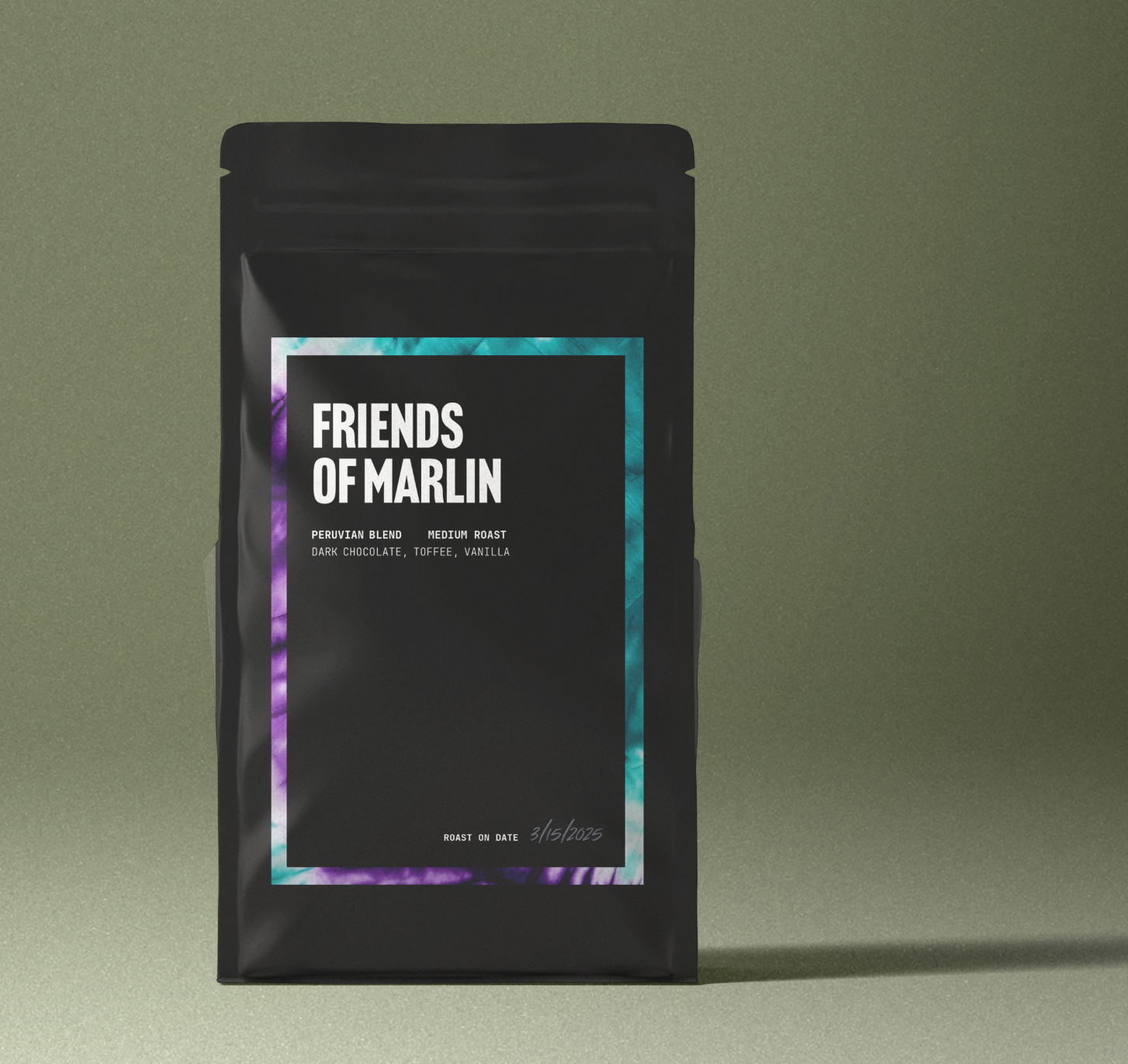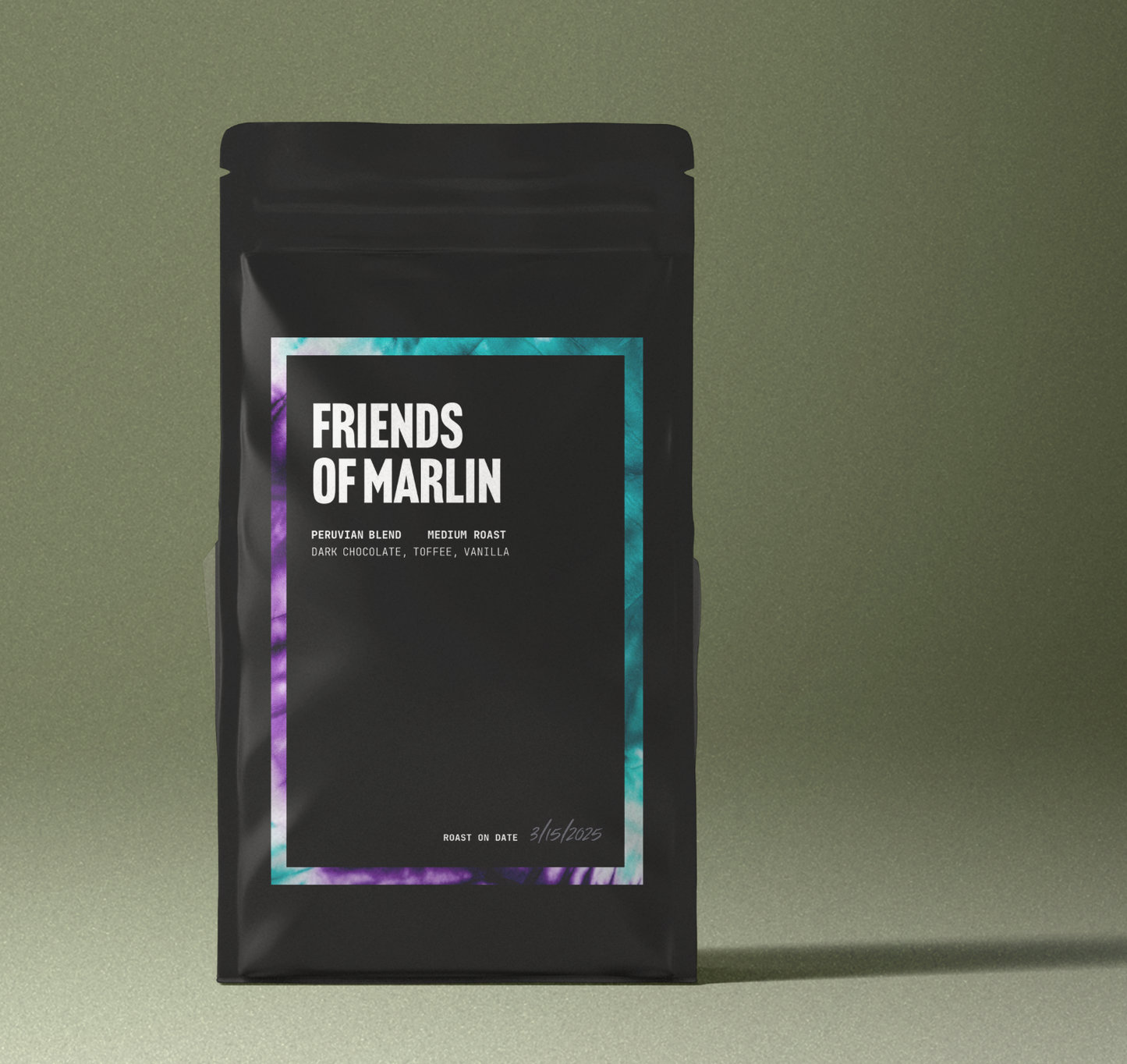
The Best Drip Coffee from Whole Beans
Share
The Beauty of Drip Coffee Drip coffee is the reliable, smooth-talking cousin of the coffee world. It's the brew that gets millions of people out of bed each morning—not with flashy flair like espresso or the slow ceremony of a siphon—but with consistency, clarity, and a balanced flavor profile. When made right, drip coffee brings out the nuanced flavors of whole beans, producing a cup that's rich, clean, and deeply satisfying.
But here's the catch: great drip coffee doesn't come from pushing a button on a machine and hoping for the best. It starts with quality whole beans and ends with precise technique. This guide will walk you through everything you need to know about making the best drip coffee from whole beans—from selecting the right coffee to dialing in grind size, water temperature, equipment, and technique.
Understanding Drip Coffee
Drip coffee, also called filter coffee, is brewed by pouring hot water over ground coffee beans contained in a filter. The water slowly moves through the coffee grounds, extracting flavor compounds and oils before dripping into a carafe or pot below. Drip coffee can be made using:
- Electric drip coffee makers (like Mr. Coffee, Bonavita, or Technivorm)
- Manual pour-over devices (such as the Hario V60, Kalita Wave, or Chemex)
Both methods fall under the "drip" umbrella, and while automatic machines offer convenience, manual pour-over brewing gives more control over variables like pour rate, water temperature, and bloom time.
If you're wondering about pour over vs drip coffee, both methods have their place. Pour-over methods generally allow for more control and tend to highlight nuanced flavors, while automatic drip coffee machines focus on consistency and convenience.

Choosing the Right Whole Beans
Your coffee is only as good as the beans you brew. That's a fact. Here's how to choose beans that will elevate your drip coffee:
- Freshness Matters: Always buy freshly roasted coffee beans. Coffee is best within two to three weeks of roasting, after which it starts to lose aroma and flavor. Check for a roast date on the bag (not just a "best by" date).
- Origin and Flavor Profile Different regions produce beans with distinct flavors:
- Ethiopia: Floral, citrusy, tea-like
- Colombia: Balanced, nutty, chocolatey
- Guatemala: Rich, full-bodied, with spicy undertones
- Kenya: Bright, fruity, often with berry notes
- Brazil: Nutty, low-acidity, sweet and chocolatey
For drip coffee, light to medium roast coffee beans tend to work best, as they highlight the bean's natural characteristics without overwhelming with roastiness.
- Single Origin vs. Blend
- Single origin coffee: Great for highlighting a specific flavor or terroir.
- Blends: Can offer a more balanced, consistent flavor—ideal for daily brewing.
Grinding Whole Beans for Drip Coffee
Grinding is arguably the most critical step in drip brewing. A poor grind can ruin even the best beans.
- Use a Burr Grinder Blade grinders to chop beans unevenly, leading to inconsistent extraction. Burr grinders crush beans to uniform sizes, which is essential for even brewing. Investing in a burr grinder for drip coffee will dramatically improve flavor clarity and consistency.
- Grind Size for Drip Coffee For most drip methods, aim for a medium grind—about the texture of sea salt or sand. Too fine, and your coffee will taste bitter and over-extracted. Too coarse, and it will taste sour or weak. If you're asking what's the best grind for drip coffee, medium is the sweet spot.
- Grind Just Before Brewing Ground coffee oxidizes quickly. To preserve flavor, grind only what you need just before you brew.


Water—The Unsung Hero of Great Coffee
Coffee is 98% water. So yes, the quality of your water matters a lot.
- Use Filtered Water Tap water with chlorine or impurities can ruin your brew. Use filtered or bottled water with balanced minerals. Aim for water with around 150 ppm (parts per million) of total dissolved solids.
- Ideal Brewing Temperature The sweet spot is 195°F to 205°F (90°C to 96°C). Water cooler than that under-extracts coffee; hotter water may over-extract it. If you're boiling water manually, wait about 30 seconds after boiling before pouring. This precise coffee brewing temperature helps in achieving the ideal flavor.
Dialing in the Coffee-to-Water Ratio
Too weak? Too strong? Mastering the coffee-to-water ratio will change your coffee game.
- Standard Ratio A great starting point is 1:16 — one gram of coffee for every 16 grams (or ml) of water. For example:
- 30g coffee → 480ml water
- 60g coffee → 960ml water
Use a digital scale for accuracy. Eyeballing it doesn't cut it when you're aiming for a perfect cup.
Tweak to Taste Like your coffee stronger? Try a 1:15 ratio. Want something lighter and more tea-like? Push it to 1:17 or 1:18. Understanding the water to coffee ratio is crucial for brewing success.
Step-by-Step: Making Drip Coffee with an Automatic Machine
Let's walk through the process of making drip coffee using a standard automatic drip coffee maker:
You'll Need:
- Freshly roasted whole beans
- Burr grinder
- Filtered water
- Coffee filters (paper or reusable)
- Coffee maker
Step-by-Step:
- Grind the Beans Medium grind, right before brewing.
- Measure Coffee and Water Use a scale to measure your coffee and water (e.g., 30g coffee for 480ml water).
- Add Filter: Place your paper filter into the brew basket and rinse it with hot water to remove any papery taste.
- Load the Grounds: Add ground coffee evenly into the filter.
- Pour in Water Fill the machine's reservoir with your measured filtered water.
- Start the Machine Let the brew cycle run. It typically takes 5–7 minutes.
- Enjoy Immediately Drink it fresh. Don't let it sit on a hot plate for hours—it'll taste stale and burnt.
Step-by-Step: Manual Pour-Over (Chemex or V60)
If you prefer the hands-on approach, pour-over offers superior control and clarity of flavor.
You'll Need:
- Pour-over brewer (Chemex, V60, Kalita Wave, etc.)
- Gooseneck kettle
- Scale and timer
- Filtered water
- Medium grind coffee
- Burr grinder
- Filter
Step-by-Step:
- Boil Water Heat water to 200°F or boil and let sit for 30 seconds.
- Prep the Filter Place the filter and rinse with hot water to eliminate paper taste and preheat the brewer.
- Weigh and Grind Coffee Use 25g of coffee to 400ml water as a base. Grind medium-fine (like table salt).
- Add Grounds to Filter Level the grounds for even saturation.
- Bloom Start your timer and pour just enough water (~50ml) to wet the grounds. Let sit for 30–45 seconds to allow CO₂ to escape. This step is known as the coffee bloom and is critical for flavor development.
- Main Pour In slow circles, pour the remaining water in stages. Keep a steady, even pour over 2.5 to 3 minutes total brew time.
- Swirl and Serve Once all water has passed through, swirl the final brew to mix the layers and pour into your mug.
Mastering Variables for a Better Brew
Small changes = big impact. Here's how to troubleshoot and optimize:
- Grind Size
- Too bitter? Your grind is too fine.
- Too sour/weak? Your grind is too coarse.
2. Brew Time Ideal time is 3–4 minutes for most drip methods.
- Too fast = under-extracted.
- Too slow = over-extracted.
3. Water Flow Manual brewers: aim for consistent, gentle pour speed. A gooseneck kettle helps control this.
- Coffee Extraction Process Understanding how water extracts flavors from coffee grounds can help you troubleshoot issues. From grind size to temperature and flow, all influence the coffee extraction process.
Cleaning and Maintenance
A dirty coffee maker = bad-tasting coffee. Simple as that.
- Daily Cleaning
- Rinse out the carafe and filter basket after each use.
- Don't let old grounds sit—they mold and smell fast.
2. Weekly
- Deep-clean your grinder and wash removable parts of your coffee machine.
3. Monthly
- Descale your coffee maker using a descaling solution or a mix of vinegar and water.
Understanding coffee filter types (paper, metal, cloth) can also impact flavor and cleanup. Choose what suits your routine.
Bonus Tips for the Best Drip Coffee
- Preheat Your Carafe and Mug Keeps your coffee hotter longer and maintains flavor integrity.
- Use a Thermal Carafe. Avoid hot plates; they "cook" your coffee. A thermal carafe preserves heat without damaging flavor.
- Experiment with Water Ratios and Origins Don't be afraid to try different beans, origins, and brewing ratios. Coffee is a journey.
- Try Iced Drip Brew hot using your drip method, then pour over ice for a refreshing iced coffee. Use slightly more coffee to compensate for dilution.
- How to Make Drip Coffee Stronger To make your drip coffee stronger, increase the amount of coffee grounds or use a finer grind. Adjusting your coffee-to-water ratio also helps.
Drip Coffee Done Right
Making amazing drip coffee from whole beans isn't just about caffeine—it's a daily ritual that brings craftsmanship to your morning. By focusing on high-quality beans, precision grinding, proper ratios, clean water, and a bit of intention, you can transform the ordinary into something extraordinary.
Whether you're brewing with a $30 drip machine or a $300 pour-over setup, remember: it's not the gear—it's how you use it. Treat your coffee with care, and it'll reward you with every sip.

